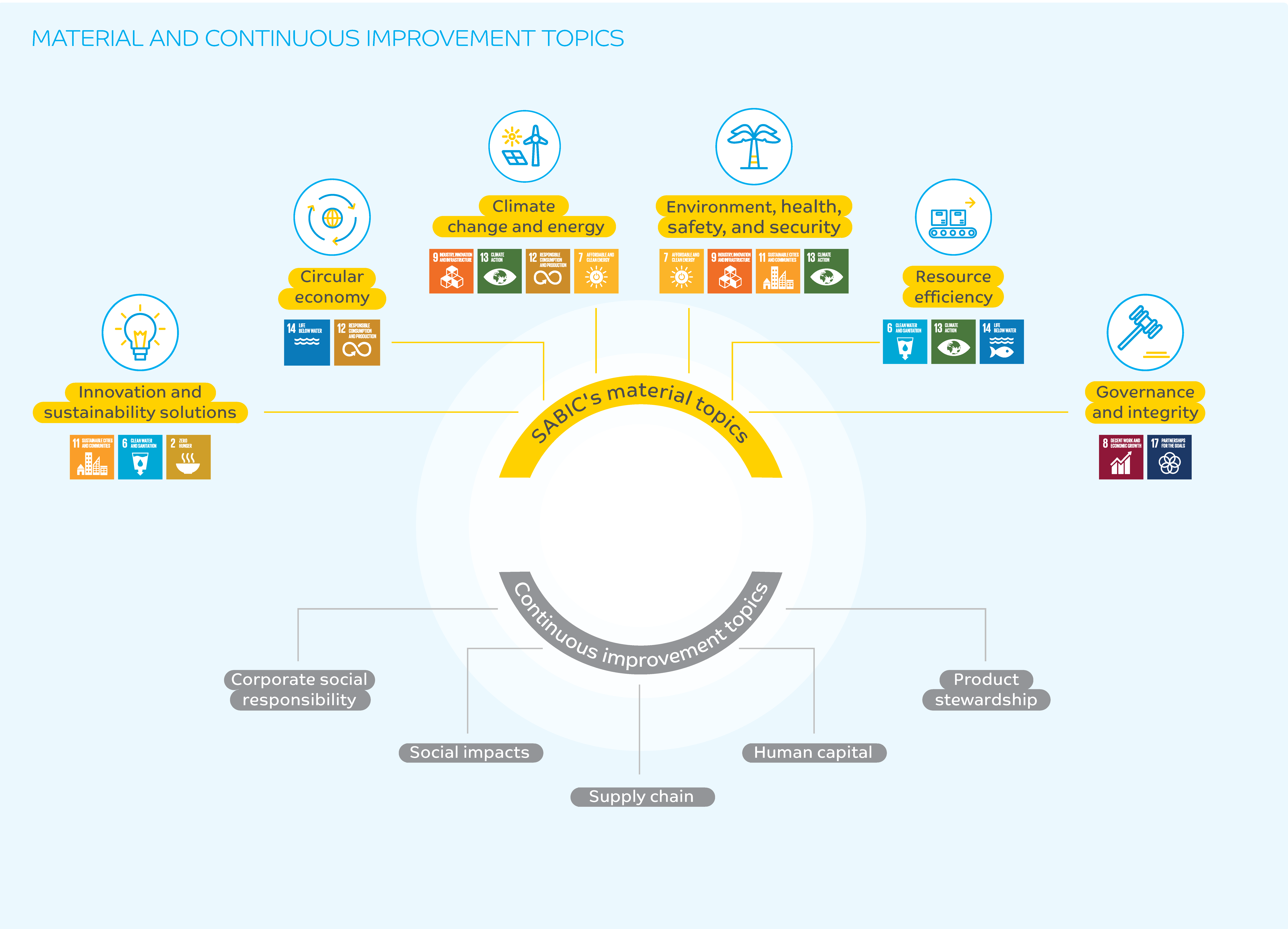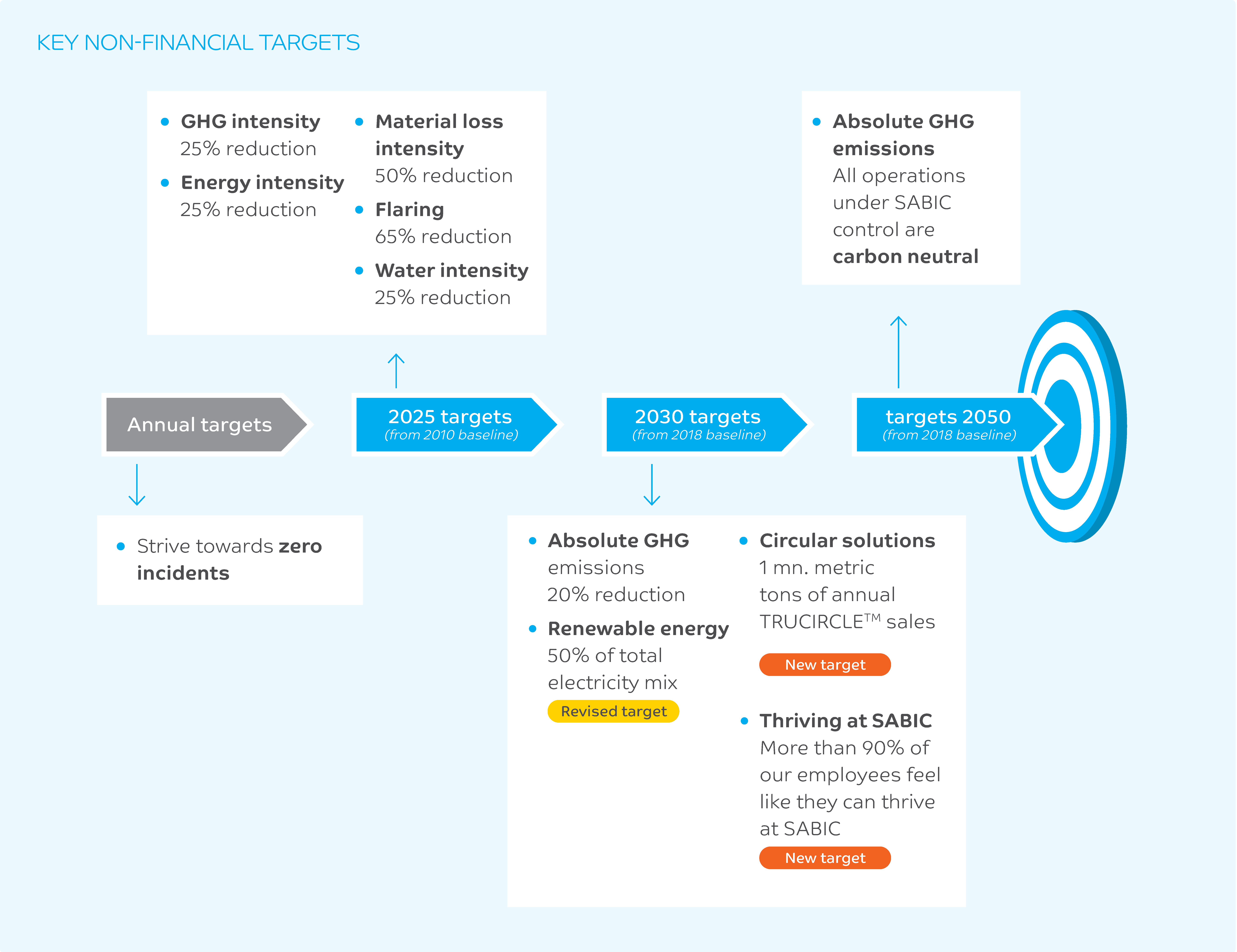MATERIALITY AND KEY NON-FINANCIAL TARGETS
Materiality analyses help us determine how to direct our resources toward the most pressing issues for our company and stakeholders.
Since conducting our first materiality analysis in 2011, we have refreshed our analysis every three to four years with input from our stakeholders. As part of these analyses, we examine our internal and external stakeholder needs, major trends, benchmarks, and relative business impacts to determine the most relevant priorities for SABIC.
The materiality topics that anchor this report were generated in 2018 and are reviewed annually as part of the report-preparation process. We have six priority materiality areas: resource efficiency; climate change and energy; innovation and sustainability solutions; circular economy; governance and integrity; and environment, health, safety, and security (EHSS). These six areas are aligned with 10 of the 17 UN Sustainable Development Goals (SDGs) where our business can have the greatest impact, addressing issues such as poverty, climate change, environmental degradation, human rights, labor, and anti-corruption.

As one of the largest chemical companies in the world, with operations in over 45 countries and sales in more than 140 countries, SABIC has many stakeholders to consider. Our objective in engaging with our stakeholders is to understand our effect on them, their priorities and expectations, and how we can collaborate and create value. By identifying each stakeholder group’s priorities through soliciting feedback at varying intervals, we attempt to balance interests, requirements, and expectations.
Read more about our stakeholders and the material topics and current issues that are most important for them.
UPDATING OUR MATERIAL TOPICS
A new materiality assessment and stakeholder analysis was conducted in 2023 and will be finalized in 2024. The materiality refresh was based on the concept of double materiality, which will help us understand not only the impact SABIC has on society and the environment, but the impact that society and the environment have on the company as well. The EU Taxonomy, the Corporate Sustainability Reporting Directive (CSRD), the Global Reporting Initiative (GRI) standards, and the International Sustainability Standards Board (ISSB) and IFRS S1 and S2 standards were among key reference points informing our application of both the impact materiality (inside-out) perspective and the financial materiality (outside-in) perspective.
Prior to stakeholder engagement, we pre-selected potential material topics by referencing reporting frameworks, the company’s strategy, regulatory requirements, peer benchmark analyses, consumer trends, and value chain analysis, among other external sources. The longlist of topics was presented to internal and external stakeholders to solicit qualitative and quantitative feedback on the significance of the topics in terms of both impact and financial materiality.
These pre-selected material topics are being prioritized based on the double materiality approach considering the scoring of a combination of impact and financial assessments. The results of the double materiality assessment and validation exercise will be presented to the executive committee for endorsement in 2024, where SABIC’s business strategy will be shaped by the outcomes. Based on these results, we will develop new initiatives, targets, and KPIs that align with results of this assessment.

Read more about our sustainability indicators and performance in our non-financial statements.
Disclaimer: This abridged interactive version of the SABIC Integrated Annual Report 2023 is based on the original PDF report published on this website. In case of any discrepancy, the original PDF report will prevail.
